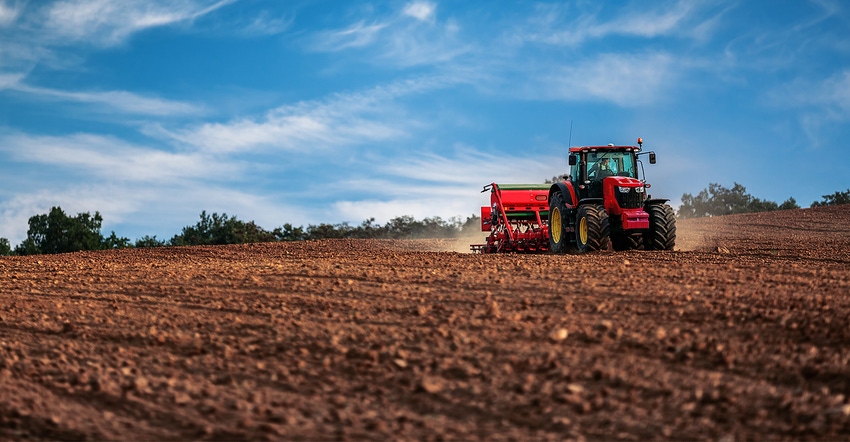July 27, 2017

By Darrell McCauley
Ruts, tracks and standing water were a common sight last fall caused by wet soils and field traffic. With the significant amount of rainfall this growing season, the situation may be about to repeat itself this fall. But farmers can reduce the risk of yield loss from soil compaction by following a few suggested practices and guidelines.
Compaction causes
There are several causes of soil compaction: rainfall impact, soil moisture, field traffic. The increased size and weight of farm equipment has made preventing soil compaction more difficult. University research indicates that soil compaction can lead to significant yield loss. Preventing compaction is a better strategy than trying to correct the condition after the fact.
Research shows that 80% of compaction occurs on the first pass over the field if the soil is too wet. Weighing the decision to delay field traffic is difficult, especially during harvest, but a delay of one or two days may improve soil conditions enough to prevent compaction that will reduce yields lasting a number of years in the field. Risking this year’s crop by delaying harvest will keep your soils from getting compacted and prevent yield loss over the next decade.
Soils that have low levels of organic matter, small soil aggregate size and excess moisture will compact, causing reduced water infiltration, restricted root growth, limited potassium uptake by the crop, and lower levels of soil microbes and fungi. Focusing on building soil health over the long term is the best strategy to prevent soil compaction.
Ask your crop consultant or Extension agent to assess your current soil condition with tools such as soil tests and penetrometers, or by using a shovel to dig a few holes, will help you assess the current state to create a baseline. You can then set a soil health goal for each field. The simple step of digging a few holes with someone who can explain soil structure would be a good start to create a long-term preventive measure.
For harvest equipment, simple measures such as checking tire pressure and establishing traffic patterns in the field can be a significant strategy to reduce the chance of soil compaction. Overinflated tires decrease the surface area contact with the soil and increase downward pressure. Allowing grain carts or trucks to travel throughout the field rather than designating traffic patterns is a common cause of compaction. Using technology such as GPS can limit the risk of compaction by keeping the same traffic lanes for harvest and transport equipment and trucks.
Wait a day
The best preventive measure is time, and by waiting that extra day to allow the soils to drain will be the best choice, but the pressure of harvest and limited harvest windows make this a difficult choice to make.
Reversing soil compaction is difficult. Deep tillage is often the first choice for many, though it is only a short-lived solution. Cover crops offer long-term soil health benefits, though again, they are not a quick fix to resolving a significant compaction problem. It is important to assess the type of compaction with a shovel or penetrometer before using deep tillage. An incorrect depth will not improve the situation, and planting one year of a cover crop such as tillage radish will also not provide a long-term reversal of significant soil compaction.
Soil compaction can have long-lasting reductions in yield, so learning more about soil structure and properties will help make the best management decisions during harvest.
McCauley is the Winnebago County Extension agriculture agent.
You May Also Like




